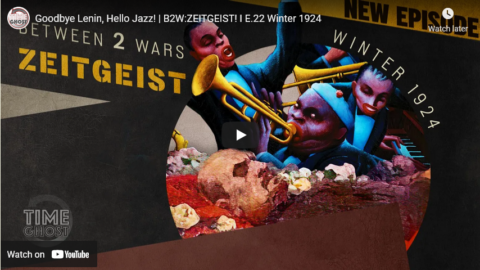TimeGhost History
Published 14 Jul 2021The winter of 1924 sees the death of not only Vladimir Lenin but also the Ottoman Caliphate. However, it also sees something fresh and completely unique enter the American mainstream. George Gershwin has given the Jazz Age a soundtrack.
Hosted by: Indy Neidell
Written by: Francis Van Berkel
Director: Astrid Deinhard
Producers: Astrid Deinhard and Spartacus Olsson
Executive Producers: Astrid Deinhard, Indy Neidell, Spartacus Olsson, Bodo Rittenauer
Creative Producer: Maria Kyhle
Post-Production Director: Wieke Kapteijns
Research by: Francis Van Berkel
Image Research by: Lucas Aimó
Edited by: Lucas Aimó
Sound design: Marek KamińskiColorizations: Klimbim, Lucas Aimó
Sources:
Wikipedia Commons
Library of Congress
Museum of the City of New YorkArchive by Screenocean/Reuters https://www.screenocean.com.
Soundtracks from Epidemic Sound:
“Peacekeepers” – Dream Cave
“Prestige” – Howard Harper-Barnes
“Louisiana” – Duke Ellington and His Orchestra
“Never Forget” – Fabien Tell
“Break Free” – Fabien Tell
“Clarinet Marmalade Blues” – Original Dixieland Jazz Band
“In Our Holiday Home” – Arthur BensonA TimeGhost chronological documentary produced by OnLion Entertainment GmbH.
From the comments:
TimeGhost History
2 days ago (edited)
Here’s a listening exercise for any of you interested in the history of Jazz (we know there are some of you out there). Leonard Bernstein’s recording of “Rhapsody in Blue” is considered the “definitive” one (see below to listen). Bernstein was a famed conductor and composer, and his music was similar to Gershwin in a lot of ways. But the score Bernstein used wasn’t the same one used by Paul Whiteman during the 1924 premiere. Bernstein used a later arrangement made for a large symphony orchestra and which styles the music much closer to European classical. Bernstein’s own conducting compliments this with a balance and pace very familiar to the concert hall tradition.It’s a beautiful interpretation, but something missing from it is the sense of just how “jazzy” and cutting edge “Rhapsody in Blue” really was. The original Jazz band scoring is a truly unique balance of American Jazz and European Classical that really is like no other. The “heat” of it is easily recognizable and it sounds like it’s being played with reckless abandon.
There is no “right” or “wrong” version here, and you can prefer one, like both, or like neither and no one could fault you. But as a historical document, the original scoring of “Rhapsody in Blue” is an amazing listen — check it out.
The Bernstein version: https://www.youtube.com/watch?v=ImgqGv0TXC
The original scoring (abridged to fit on record): https://www.youtube.com/watch?v=NIr_WPcVDt8




